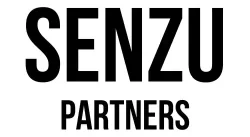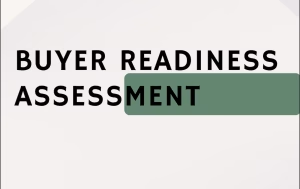The difference between acquisition success and failure isn’t always about market timing or luck. Most failed deals can be traced back to predictable, preventable buy side mistakes made during the transaction process. These errors follow consistent patterns across industries and deal sizes, from small bolt-on acquisitions to transformational mergers.
Understanding these critical pitfalls and the proven strategies to avoid them can mean the difference between creating lasting value and joining the ranks of acquisition casualties.
1. Falling in Love with the Deal Instead of the Strategic Fit
Deal fever is one of the most dangerous emotions in M&A. Once executives become emotionally invested in an acquisition target, objectivity disappears. They start rationalizing weak fundamentals, overlooking red flags, and convincing themselves that any strategic gaps can be fixed post-closing.
We’ve seen buyers justify acquisitions with phrases like “we can turn this around” or “the market potential is enormous” while ignoring fundamental misalignment with their core business strategy.
Warning Signs:
- Internal discussions focus more on closing the deal than evaluating strategic merit
- Teams start working backward from a desired outcome rather than following the data
- Due diligence becomes about confirming assumptions rather than testing hypotheses
- Alternative targets are dismissed too quickly without proper evaluation
Ways to Mitigate: Establish clear, non-negotiable strategic criteria before beginning any deal process. Create a scoring framework that evaluates each target against specific strategic objectives, market dynamics, and financial thresholds. Most importantly, always have diverse perspectives. Your deal team needs someone whose job is to challenge assumptions and identify potential deal-breakers.
Before every major decision point, ask: “If we learned about this opportunity today, would we pursue it?” If the answer isn’t an enthusiastic yes, step back and reassess.
2. Treating integration as an afterthought
Integration is where deals are won or lost, yet it’s consistently underestimated during the transaction phase. Buyers focus intensely on due diligence and valuation but treat integration planning as an afterthought. The result? Culture clashes, talent exodus, operational disruptions, and integration costs that can easily exceed 10-15% of the deal value. Integration challenges compound quickly. IT systems that don’t talk to each other, incompatible processes, redundant overhead structures, and confused customers can transform a promising acquisition into a nightmare.
Some Integration Blind Spots Might Be:
- Technology infrastructure compatibility and data migration
- Regulatory compliance in different jurisdictions or industries
- Customer communication and retention during transition periods
- Vendor contract renegotiations and supplier relationship management
- Employee benefits harmonization and cultural alignment
- Brand integration and market positioning decisions
Ways to Mitigate: Begin integration planning during due diligence, not after signing and have a dedicated integration management plan. Develop detailed integration workstreams covering IT, HR, operations, finance, and commercial functions. Budget 12-18 months for full integration and assume costs will run 20-30% higher than initial estimates. Most importantly, identify and retain key talent early in the process. Losing critical employees during integration can permanently damage the acquisition’s value creation potential.
3. Letting sellers control your diligence timeline
In competitive auction processes, buyers rightfully feel pressure to move quickly to avoid losing deals. Sometimes, this leads to abbreviated due diligence periods where critical issues are overlooked or insufficiently investigated. Sellers and their brokers may create artificial urgency, pushing buyers to make decisions without complete information. Rushed diligence is expensive diligence. The cost of discovering major issues post-closing, environmental liabilities, customer concentration risks, regulatory compliance gaps, or financial reporting irregularities almost always exceeds the cost of thorough upfront investigation.
Some Due Diligence Blind Spots Might Be:
- Financial Quality: Revenue recognition practices, customer payment terms, working capital normalization, and EBITDA adjustments.
- Commercial Sustainability: Customer retention trends, competitive positioning, pricing power, and market share dynamics.
- Operational Resilience: Key person dependencies, supplier relationships, regulatory compliance, and system redundancies.
- Legal and Regulatory: Intellectual property ownership, pending litigation, employment law compliance, and environmental liabilities.
Ways to Mitigate: Resist artificial deadlines that compromise due diligence quality. If a seller won’t provide adequate time for proper evaluation, that’s often a red flag about the business or the seller’s negotiating approach. Create a due diligence playbook that identifies minimum investigation requirements for each functional area. Use experienced advisors who can accelerate the process through parallel workstreams and focused analysis. Remember: it’s better to lose a deal due to insufficient time than to win a deal with insufficient information.
Here are some resources you can use as a part of your due diligence process.
4. Focusing only on numbers while ignoring people and culture
Most buyers conduct extensive financial and operational due diligence, but can sometimes completely overlook cultural compatibility. This is particularly dangerous in service businesses, professional services firms, or companies where talent and relationships drive value creation. Cultural misalignment manifests in multiple ways: decision-making processes, communication styles, performance management approaches, customer relationship management, and strategic planning philosophies. When cultures clash post-closing, the result is often talent flight, customer defection, and operational paralysis.
A few ways to prevent culture clash:
- Leadership Assessment: Evaluate management teams’ decision-making styles, communication preferences, and strategic thinking approaches
- Employee Engagement Analysis: Understand what motivates key talent and how that aligns with your organization’s values and practices
- Customer Relationship Evaluation: Assess how the target company builds and maintains customer relationships. This is particularly important in relationship-driven businesses
- Operational Philosophy Alignment: Compare approaches to quality, innovation, risk management, and growth strategies.
Treat cultural due diligence as seriously as financial due diligence. Conduct structured interviews with management teams, key employees, and major customers. Use behavioral assessment tools to understand leadership styles and team dynamics. Develop a cultural integration plan before closing that addresses communication, decision-making processes, performance management, and career development. Most importantly, identify cultural “non-negotiables” for both organizations and develop strategies for managing differences constructively.
5. Abandoning Valuation Discipline due to Pressure or Ego

Competitive auction processes can drive valuations beyond rational levels, particularly when buyers become emotionally invested in winning. Egos, internal pressure to “get deals done,” and fear of missing opportunities can lead to bidding wars that destroy value before the ink is dry on the purchase agreement.
Overpaying isn’t just about the initial purchase price, it affects every aspect of value creation. Higher acquisition costs mean longer payback periods, increased integration pressure, and reduced flexibility for additional investments in growth or operational improvements.
Valuation Discipline Framework:
- Walk-Away Price: Establish maximum valuation before beginning negotiations and stick to it regardless of auction dynamics.
- Value Creation Analysis: Model specific value creation initiatives and their probability of success. Don’t rely on generic synergy assumptions
- Scenario Planning: Develop base, bull, and bear cases with different valuation ranges for each scenario.
- Alternative Analysis: Maintain a pipeline of potential targets to reduce emotional attachment to any single deal.
Ways to Mitigate: Develop rigorous valuation discipline supported by detailed financial modeling and value creation analysis. Remember that the best deals are often the ones you don’t do. Maintaining bidding discipline preserves capital for better opportunities and prevents the value destruction that comes from overpaying.
6. Treating Management Team Evaluations as Box Checking
For acquisition strategies of a certain size, the existing management team will play a critical role in post-closing success. Yet buyers often conduct superficial management assessments focused on technical competencies rather than leadership capabilities, cultural fit, and growth potential. Management team issues become magnified post-closing when these leaders are expected to execute integration plans, adapt to new corporate structures, and deliver on growth commitments. The wrong management team can turn a strategically sound acquisition into an operational disaster.
Some Talent Evaluation Blind Spots:
- Leadership Capabilities: Ability to manage through change, communicate effectively, and inspire teams during uncertain periods.
- Strategic Thinking: Understanding of market dynamics, competitive positioning, and growth opportunities beyond their current scope.
- Operational Excellence: Track record of executing complex initiatives, managing performance, and driving continuous improvement.
- Cultural Adaptability: Willingness and ability to adapt to new processes, reporting structures, and performance expectations.
Ways to Mitigate: Conduct comprehensive management assessments using structured behavioral interviews, reference checks with former colleagues and customers, and objective leadership assessment tools. Include your own senior leaders in the evaluation process to assess cultural fit and working relationship potential. Develop retention packages and integration roles for key leaders before closing, but also prepare succession plans for critical positions in case key talent departs. Consider bringing in interim leadership support for complex integrations or when management team gaps are identified.
7. Poor Stakeholder Communication
No matter the size, M&A transactions affect multiple stakeholder groups—employees, customers, suppliers, lenders, shareholders, etc., yet many buyers fail to develop comprehensive communication strategies. Poor communication creates uncertainty, reduces cooperation during integration, and can lead to customer defection or talent flight before the acquisition delivers value. Information vacuums are filled with speculation, rumors, and worst-case scenario assumptions. Employees worry about job security, customers question service continuity, and suppliers wonder about payment terms and relationship stability.
Establish Your Stakeholder Communication Guidelines:
- Internal Teams: Regular updates on deal progress, integration planning, and role definitions to maintain focus and reduce uncertainty.
- Target Company Employees: Clear communication about career opportunities, cultural integration, and operational changes.
- Customers: Proactive outreach to explain service improvements, relationship continuity, and value enhancement opportunities.
- Suppliers and Partners: Early engagement about contract terms, relationship expectations, and partnership opportunities.
Ways to Mitigate: Develop stakeholder communication plans during due diligence that address timing, messaging, and responsibility for each stakeholder group. Create consistent messaging frameworks that emphasize opportunity and value creation rather than just change management. Transparency and frequent communication almost always produce better outcomes than silence and speculation.
Successful acquisitions aren’t just about finding good targets or negotiating favorable terms, they’re about executing a disciplined process that maximizes the probability of value creation while minimizing predictable risks. The seven mistakes outlined above are entirely preventable with the right processes, advisory, and commitment to disciplined execution.
Whether you’re developing internal M&A capabilities or considering your first acquisition, remember that the most expensive mistake is learning these lessons through your own failed deals rather than leveraging the hard-won experience of others.
The best buyers aren’t necessarily the ones who close the most deals, they’re the ones who create sustainable value through disciplined strategic acquisitions while avoiding the costly buy side mistakes that destroy value for so many others.
Ready to take the next step in your acquisition journey? Join our Buyer Network and grab some time to learn more about our Buyer Solutions.




